Officially opening in the WonderLab gallery on Wednesday, August 16, 2023: HoverCrafts! Design and construct your own craft. Test your creation in the wind tunnel – a vertical column of moving air. Watch your invention embark on an aerodynamic adventure.
Collaboration: The Idea and the Process
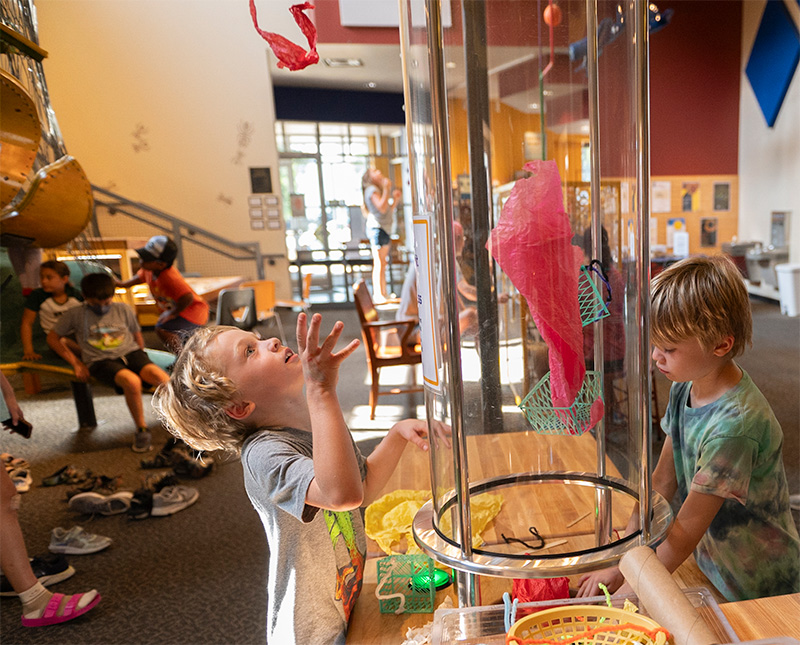 In 2019 physicists at the Center for Exploration of Energy and Matter (CEEM) at Indiana University approached WonderLab to request a partnership for a National Science Foundation Grant (NSF).
In 2019 physicists at the Center for Exploration of Energy and Matter (CEEM) at Indiana University approached WonderLab to request a partnership for a National Science Foundation Grant (NSF).
“The National Science Foundation has really emphasized the importance of using our resources for broader impact, community impact,” said Dan Salvat, CEEM Associate Scientist. For Salvat, a nuclear physicist, that meant bringing the collaborative skills he uses to design experiments with international colleagues to the community where he lives.
The project was funded and after pandemic delays, production of a “wind tunnel engineering experience” began in earnest in 2022 by CEEM staff.
“The goal was to create a design and test engineering experience that featured the core physics concept of forces and motion,” said Karen Jepson-Innes, WonderLab Executive Director. “We want to encourage visitors to explore and learn about these forces through their own experiments, including crafting and creating.”
Salvat, along with Mark Luxnat, CEEM Mechanical Engineering Technologist, worked closely with Jepson-Innes and the WonderLab exhibits team to design the exhibit. The ultimate goal: a visitor activated wind tunnel that could be used to lift and propel objects of different shapes and sizes
Design – Build – Test
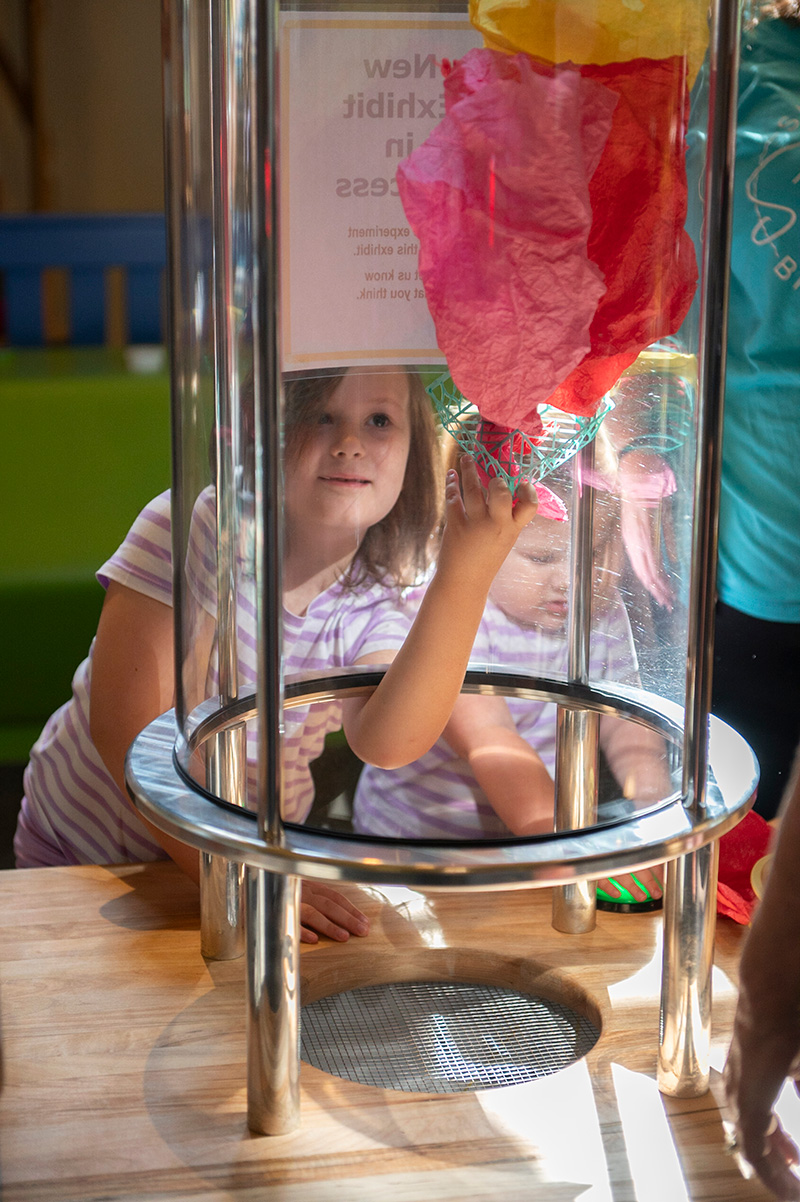 Along with the technical specifications for the project, WonderLab exhibits must also communicate accurate science, be safe, be as indestructible and as easy to repair as possible, ADA compliant, engaging, open ended, and inviting to a wide age range. But most of all an exhibit must be fun. This is a tall order.
Along with the technical specifications for the project, WonderLab exhibits must also communicate accurate science, be safe, be as indestructible and as easy to repair as possible, ADA compliant, engaging, open ended, and inviting to a wide age range. But most of all an exhibit must be fun. This is a tall order.
According to Luxnat, there were a number of obstacles that had to be addressed during the design process. It was tricky to harness enough power that wasn’t too loud. The size of the tube needed to be balanced against the length of the tunnel. And the range of materials needed to build the unit was diverse: wood, aluminum, plexiglass, and electrical components.
As the exhibit began to take shape both Luxnat and Salvat found the work challenging but deeply satisfying.
“Working on this exhibit has helped me an awful lot,” said Luxnat. “ I’ve done more hands on with this project than any other thing I’ve done. I was building and assembling. I was in the shop. It relaxes me to use my hands and I’ve enjoyed it.”
The final result? A 4-foot crystal clear wind tunnel mounted on a butcher block table top with an additional table providing enough space for building and crafting. Next to the tunnel is an irresistible bright, glowing green button that turns on the power. The exhibit, HoverCrafts, is accessible from all sides and suited for visitors using wheelchairs. The shorter tables are low enough for young scientists; the taller tables tall enough for adults to use comfortably.
After three weeks of visitor testing in the gallery HoverCrafts is officially opening to the public on Wednesday, August 16.
Collaborative Engineering = Fun
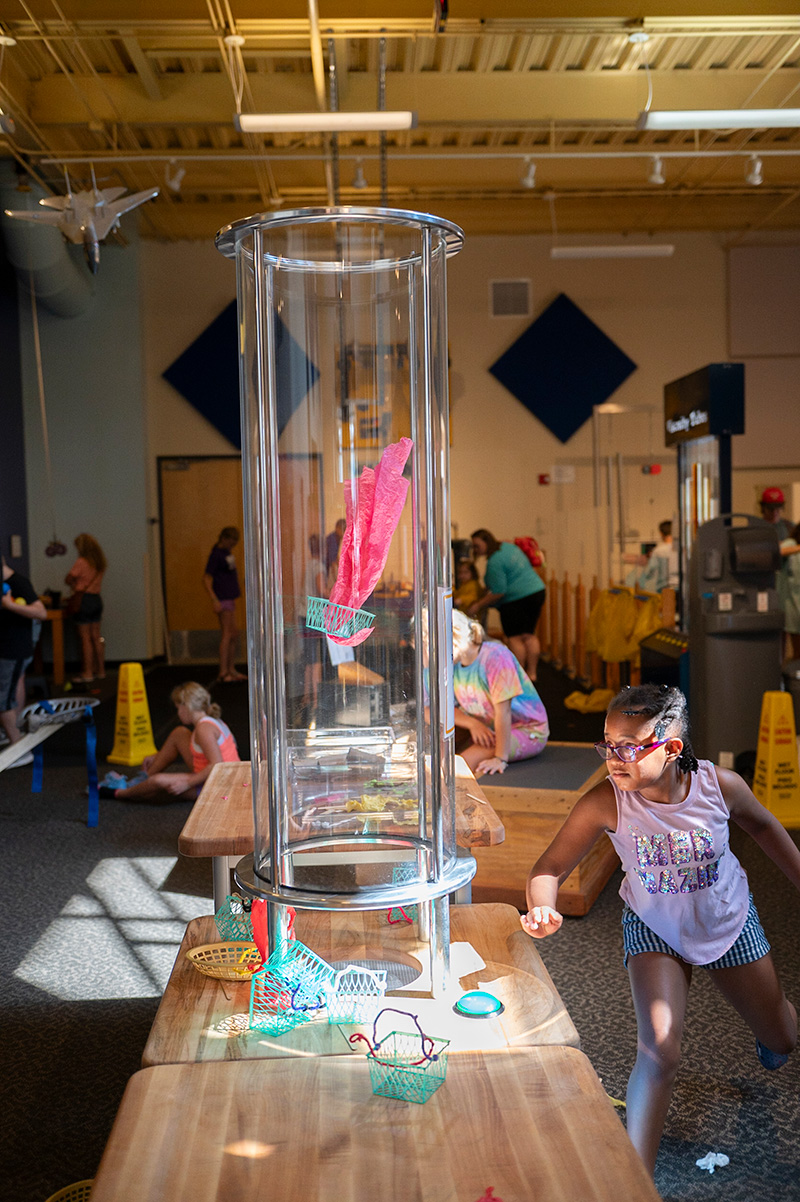 “HoverCrafts has been very popular with visitors during our preliminary testing,” said Ella Heckman, WonderLab Museum Experience Director. “Visitors are having so much fun! I’ve seen families and groups working together to build. They create unexpected things! Massive amalgamations of tissue paper and pipe cleaners.”
“HoverCrafts has been very popular with visitors during our preliminary testing,” said Ella Heckman, WonderLab Museum Experience Director. “Visitors are having so much fun! I’ve seen families and groups working together to build. They create unexpected things! Massive amalgamations of tissue paper and pipe cleaners.”
HoverCrafts provides a gateway to the engineering process through hands-on planning, construction, testing, and iteration. Visitors are encouraged to tinker and adjust their creations to achieve individual design goals. How high will your creation hover, float, or fly?
“There is something surprising and delightful when things shoot into the air,” said Jepson-Innes. “I’ve seen adults and kids working together – collaboratively – and then they are delighted by what they’ve achieved.”
“There’s also a lot of basic physics that is demonstrated by this exhibit,” Jepson-Innes continued, “such as surface area, density and aerodynamics, and visitors learn about these phenomena by hands-on experience.”
Plans for the exhibit include rotation of materials as well as specifically designed challenges to encourage further exploration. The engineers at CEEM have also created a number of airflow modifications that further expand the experience.
What’s Next?
The NSF grant that provided funding for HoverCrafts is a multi-year grant with resources for two more physics focused exhibits. Specifically, an exhibit about light and color and an exhibit about magnetism.
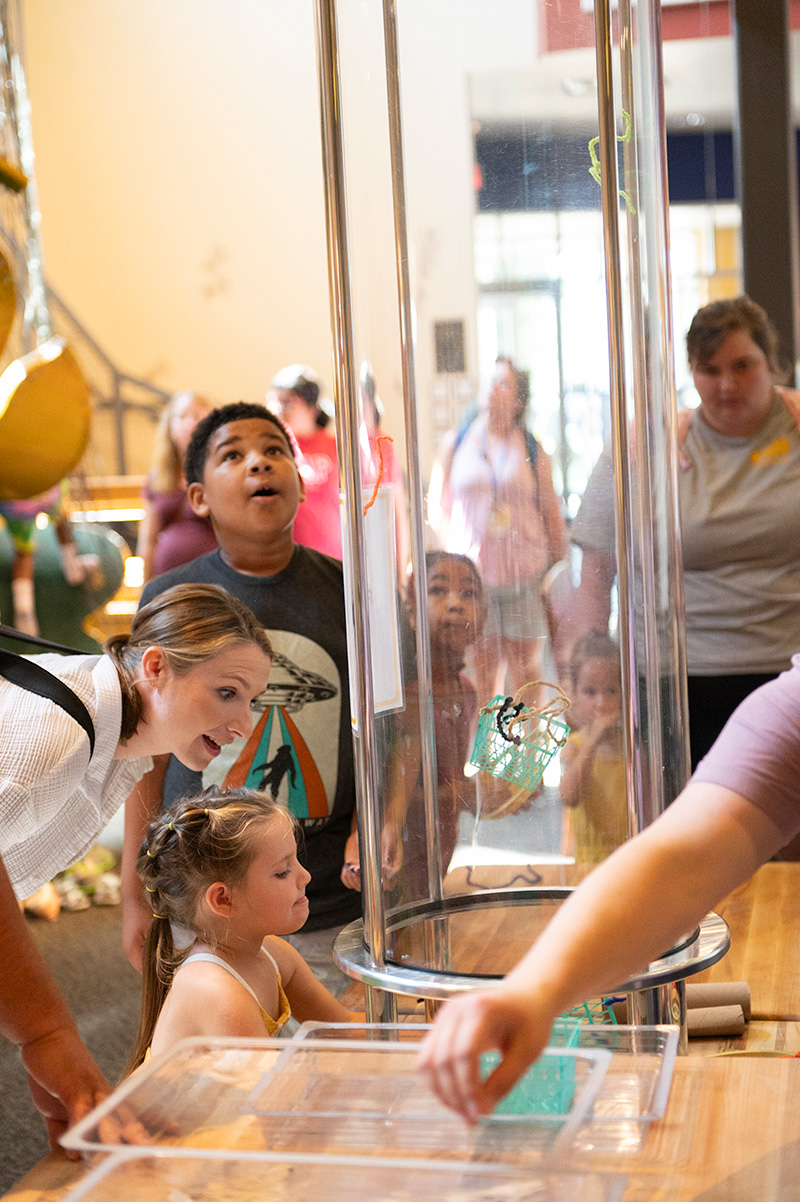 “Fabrication of these types of exhibits is beyond the capacity and resources of the WonderLab onsite facility to create,” said Jepson-Innes. “I love that WonderLab staff get to work with leading researchers in the field. It embeds us more deeply into our scientific mission and community.”
“Fabrication of these types of exhibits is beyond the capacity and resources of the WonderLab onsite facility to create,” said Jepson-Innes. “I love that WonderLab staff get to work with leading researchers in the field. It embeds us more deeply into our scientific mission and community.”
Plans for the next two exhibits are underway although specifics have yet to be released. Both the WonderLab exhibits team and CEEM staff are eager and inspired by the success of HoverCrafts.
“It’s fun and good to do these projects,” said Salvat. “The broader impact is inspiring. We are excited to keep working.”
“Building this exhibit might be the most important thing I’ve ever done,” said Luxnat. “If this exhibit can inspire someone who then later invents anti-gravity that would be amazing. Or an electric airplane. Just imagine!”
Where to See HoverCrafts
HoverCrafts is located on the first floor of WonderLab and includes a rotating selection of building materials. Suitable for most ages, visitors’ crafts can be launched up the wind tunnel with just the push of a button.
HoverCrafts is funded by National Science Foundation grants to the experimental nuclear physics group at Indiana University and built by staff at the IU Center for Exploration of Energy and Matter and the IU Department of Physics.

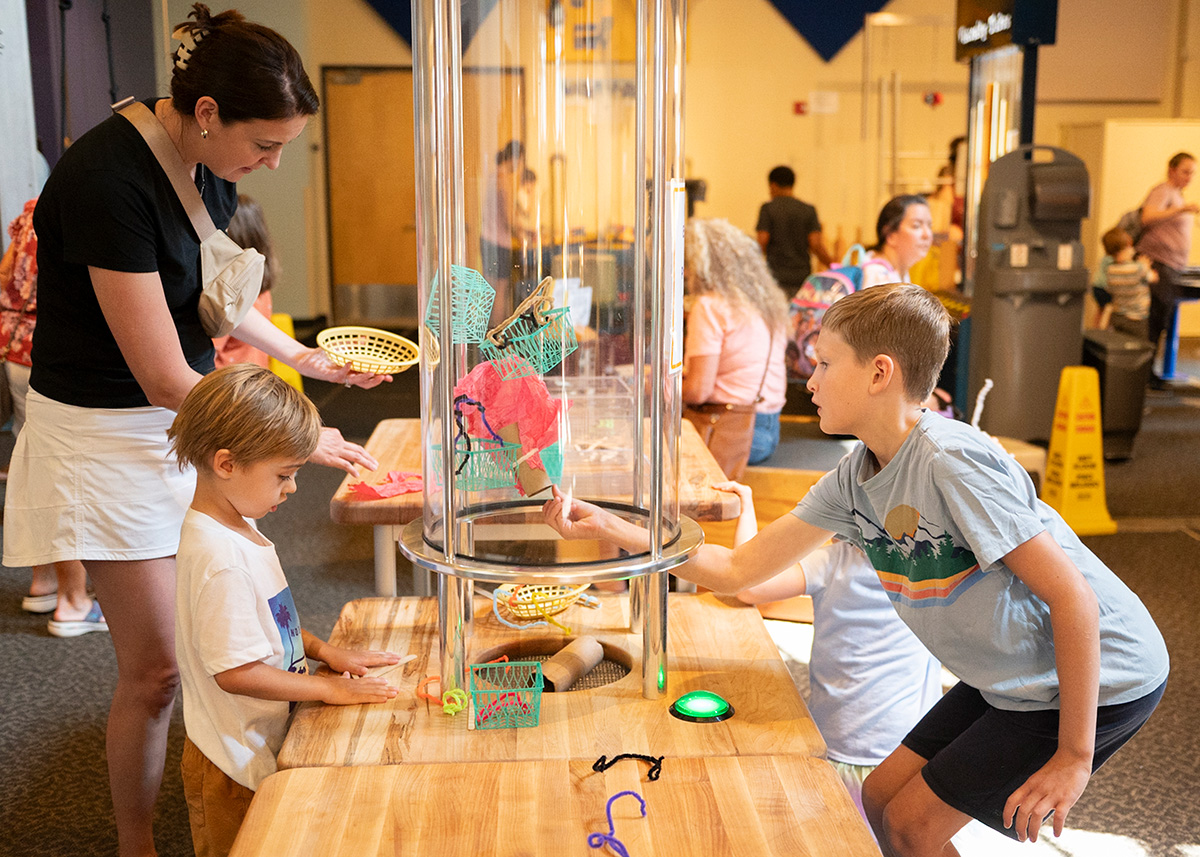
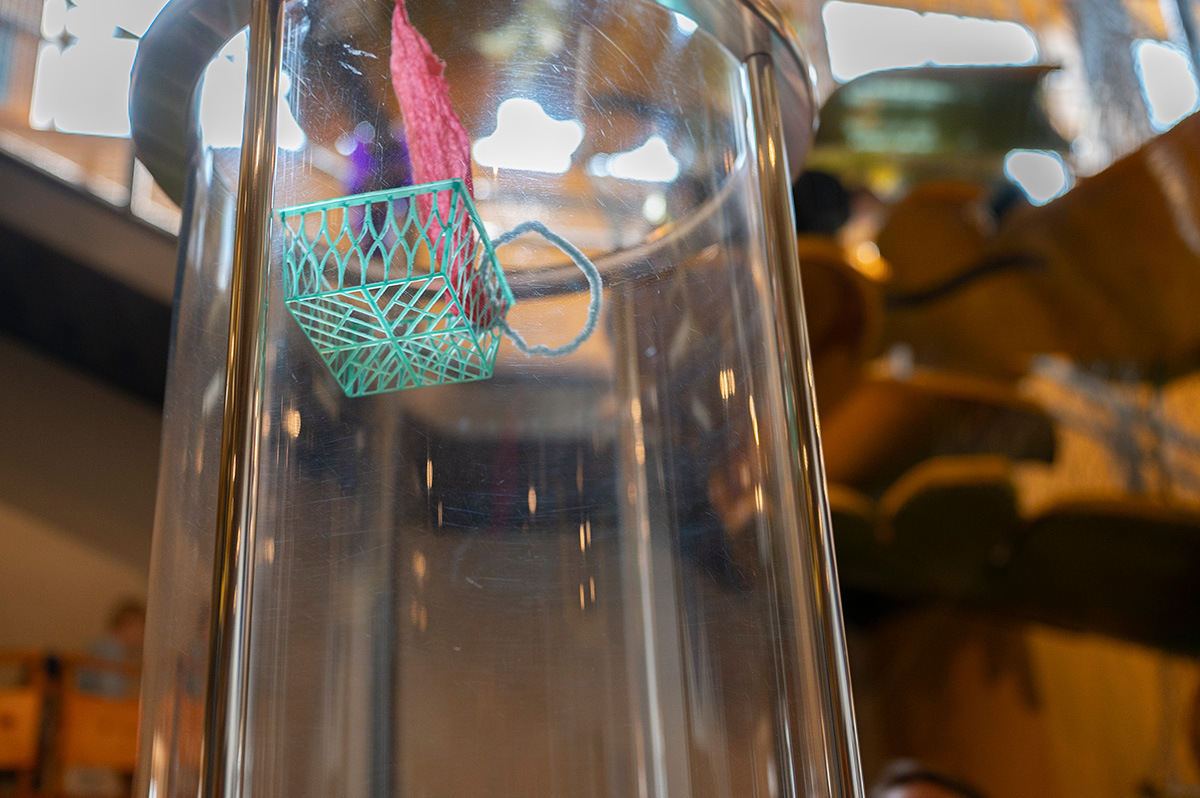
[…] Hovercrafts “Design and construct your own craft. Test your creation in the wind tunnel – a vertical column of moving air. Watch your invention embark on an aerodynamic adventure.” This exhibit opened in August 2023. Entrance is included with museum admission, a staff member said Nov. 29, 2023. […]